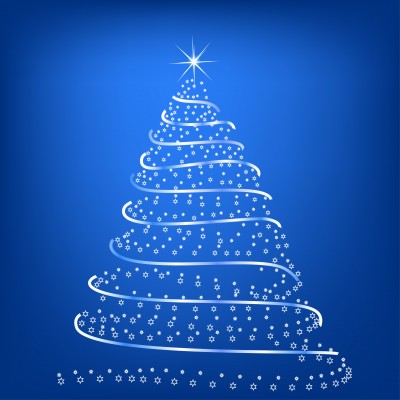December: A Month Of Celebrations
December is indeed a busy month for most folks as they shop, plan, party, and attend religious, social, and cultural events. It begins too soon after Thanksgiving and ends with a bang as it ushers in a new year. It is a season unto itself, one filled with excitement, symbols, customs, reflection, and a general sense of good will. Four major celebrations occur during December, both secular and religious (or a combination of the two) and include the following:
 December 20 -28. Hanukkah (or any one of a dozen spellings).
December 20 -28. Hanukkah (or any one of a dozen spellings).
This Festival of Lights is an eight-day Jewish holiday commemorating the rededication of the Holy Temple in Jerusalem at the time of the Maccabean revolt of the second century BCE. Hanukkah is observed for eight nights and days, starting on the 25th day of Kislev according to the Hebrew calendar, which may occur at any time from late November to late December in the Gregorian calendar. The festival is observed by the ;lighting of the candles on a nine-branched menorah, one candle on each night of the holiday, progressing to eight on the final night, and it is customary to give children one gift (gelt) each night. Although it is based on a military victory, it is actually considered a time to celebrate Jewish independence and religious freedom in general. Hanukkah is a relatively minor holiday in the Jewish year; in the United States, however, its closeness to Christmas has brought greater attention to Hanukkah and its gift-giving, special foods, and games.
December 25. Christmas
 The religious basis: Christmas is a Christian holy day which celebrates the birth of Jesus Christ. It is typically celebrated on December 25th, and the word Christmas comes from "Christ's mass." The story of the birth of Christ is told in the opening chapters of the gospels of Luke and John. Each contains different elements of the Christmas story. The visit of the Archangel to the shepherds and the birth of Jesus in a manger are from Luke. The story the visit from the Wise Men bringing gifts of gold, frankincense, and myrrh are from Matthew.
The religious basis: Christmas is a Christian holy day which celebrates the birth of Jesus Christ. It is typically celebrated on December 25th, and the word Christmas comes from "Christ's mass." The story of the birth of Christ is told in the opening chapters of the gospels of Luke and John. Each contains different elements of the Christmas story. The visit of the Archangel to the shepherds and the birth of Jesus in a manger are from Luke. The story the visit from the Wise Men bringing gifts of gold, frankincense, and myrrh are from Matthew.
Over the years Christmas has also become a very popular social holiday with an emphasis on lighted and decorated trees and wreaths, exchange of presents, caroling, special foods, and the colors red and green. Christmas traditions abound throughout the Western world, many of which have secular origins, some with their roots in ancient folklore and pagan beliefs. Click here to learn about a wide range of Christmas customs.
December 26-January 1.
Kwanzaa. Neither political nor religious, Kwanzaa is a reflective holiday which was created in the 1960’s to foster pride and unity among African-Americans. Kwanzaa is a week -long celebration honoring universal African-American heritage, family life, and culture. It features activities such as lighting a candle holder with seven candles—each representing an important principle of life--and culminates in a feast and gift giving. Visit Wikipedia for much more information about this holiday
December 31. New Year’s Eve.
 New Year's Eve is a social holiday observed annually on December 31, the final day of any given year in the Gregorian calendar. In modern societies New Year's Eve is often celebrated at festive gatherings, during which participants dance, eat, consume alcoholic beverages, and watch or light fireworks to say goodbye to the current year and celebrate the incoming one. The observance of New Year's Eve generally extends through midnight of January 1. It is a holiday celebrated throughout the world and has many different names. The dropping of the ball in Times Square and the singing of Auld Lang Syne are symbolic of this holiday in the U.S.
New Year's Eve is a social holiday observed annually on December 31, the final day of any given year in the Gregorian calendar. In modern societies New Year's Eve is often celebrated at festive gatherings, during which participants dance, eat, consume alcoholic beverages, and watch or light fireworks to say goodbye to the current year and celebrate the incoming one. The observance of New Year's Eve generally extends through midnight of January 1. It is a holiday celebrated throughout the world and has many different names. The dropping of the ball in Times Square and the singing of Auld Lang Syne are symbolic of this holiday in the U.S.
Here are outstanding power point presentations dealing with each of these holidays. Although the site is designed primarily for children, the extensive array of topics and interesting information provides excellent reading for adults, too.
Happy Holidays from The Hat Team!!










